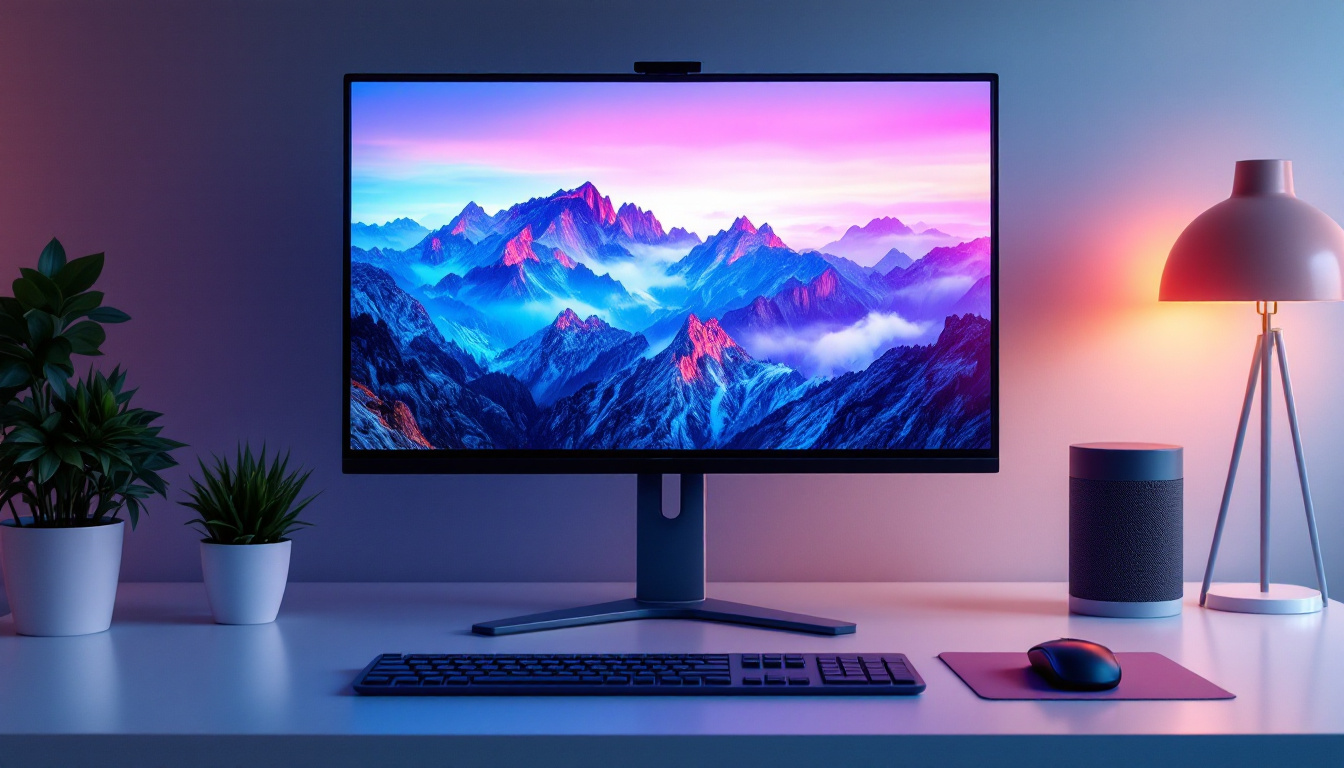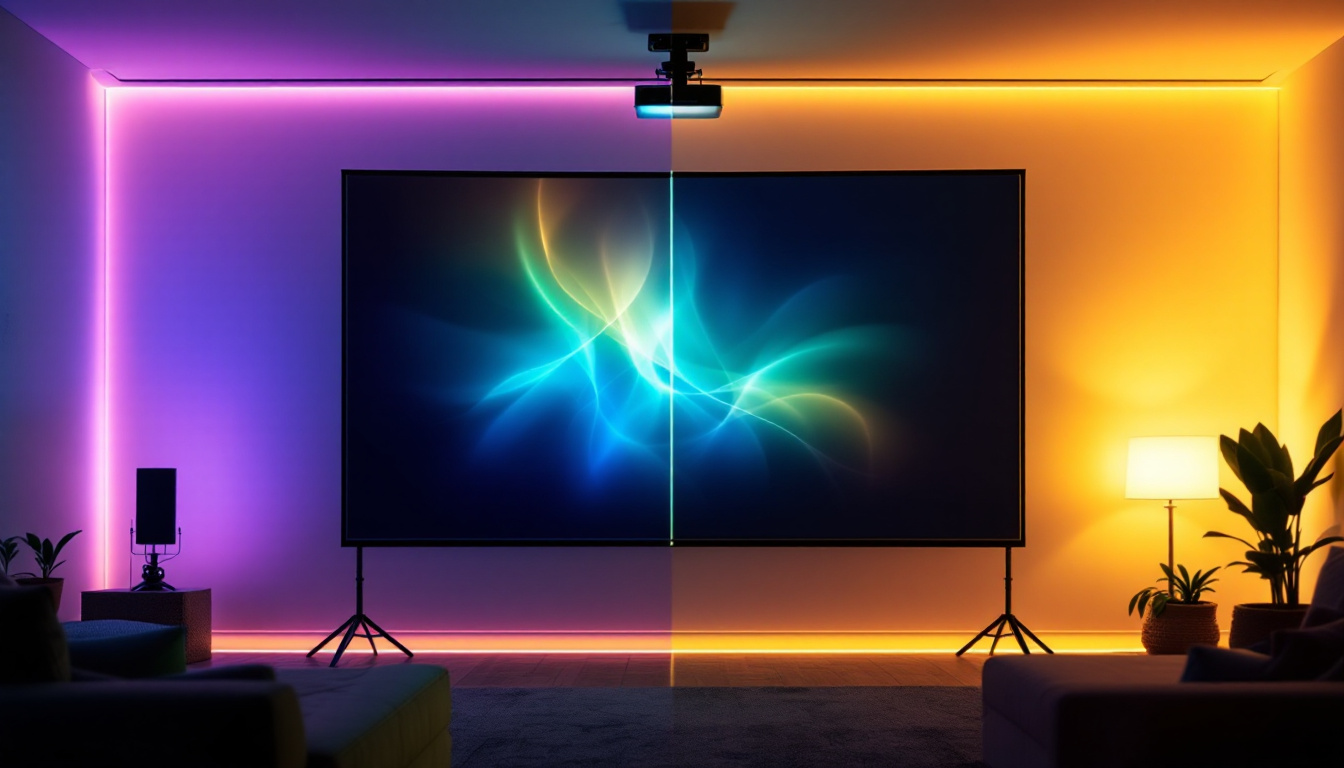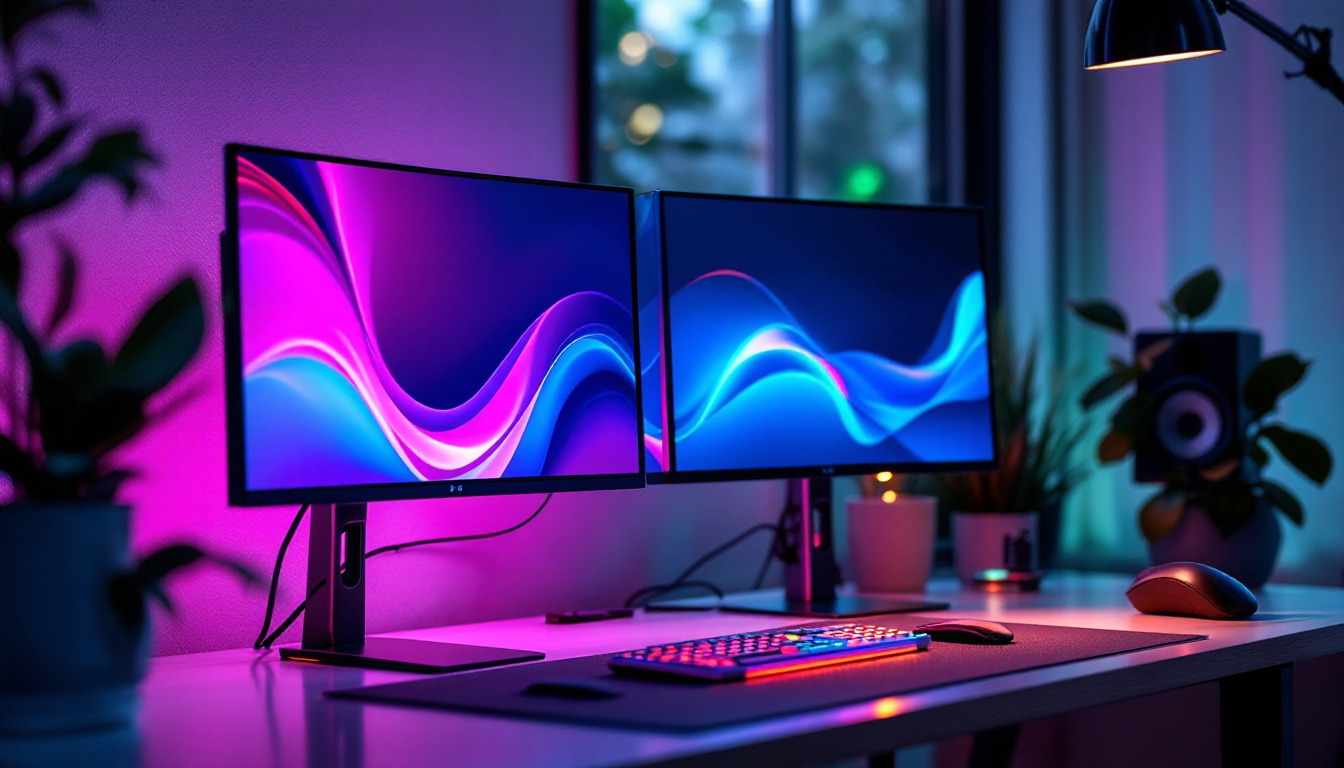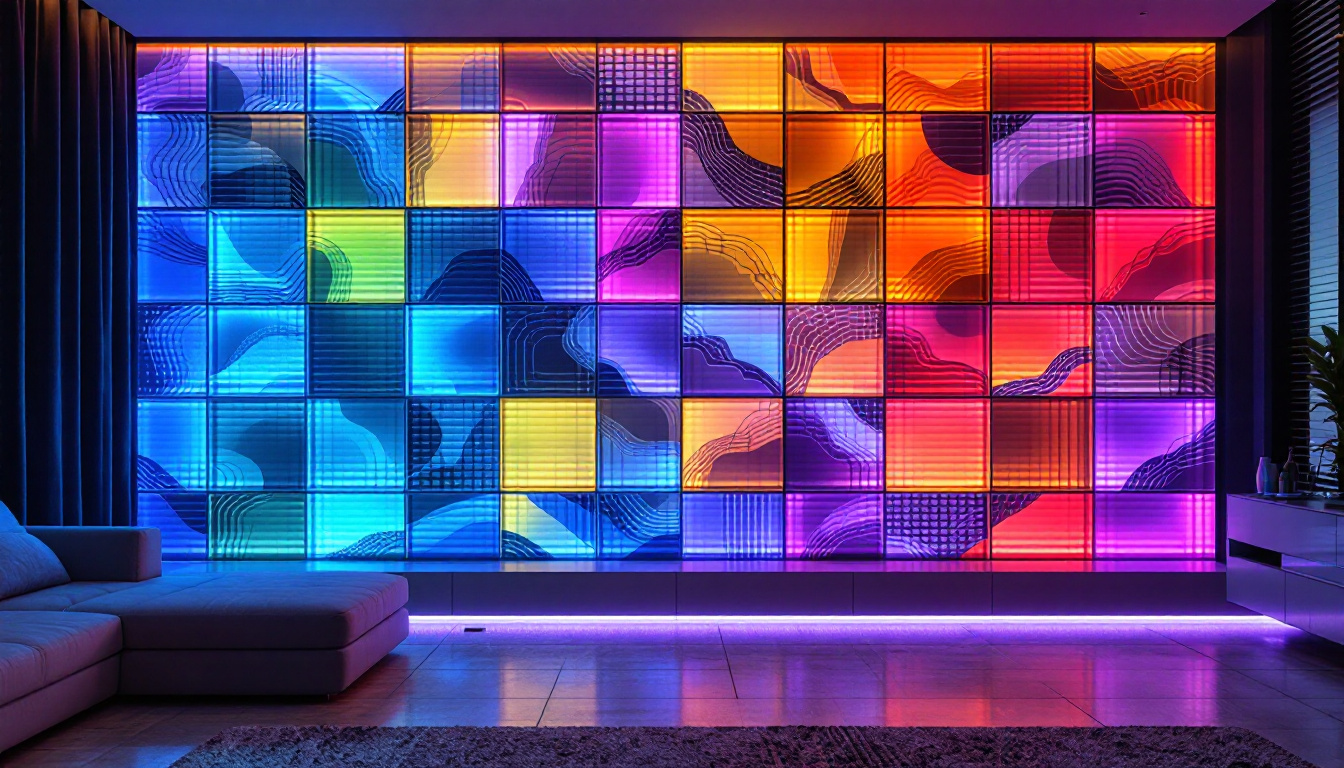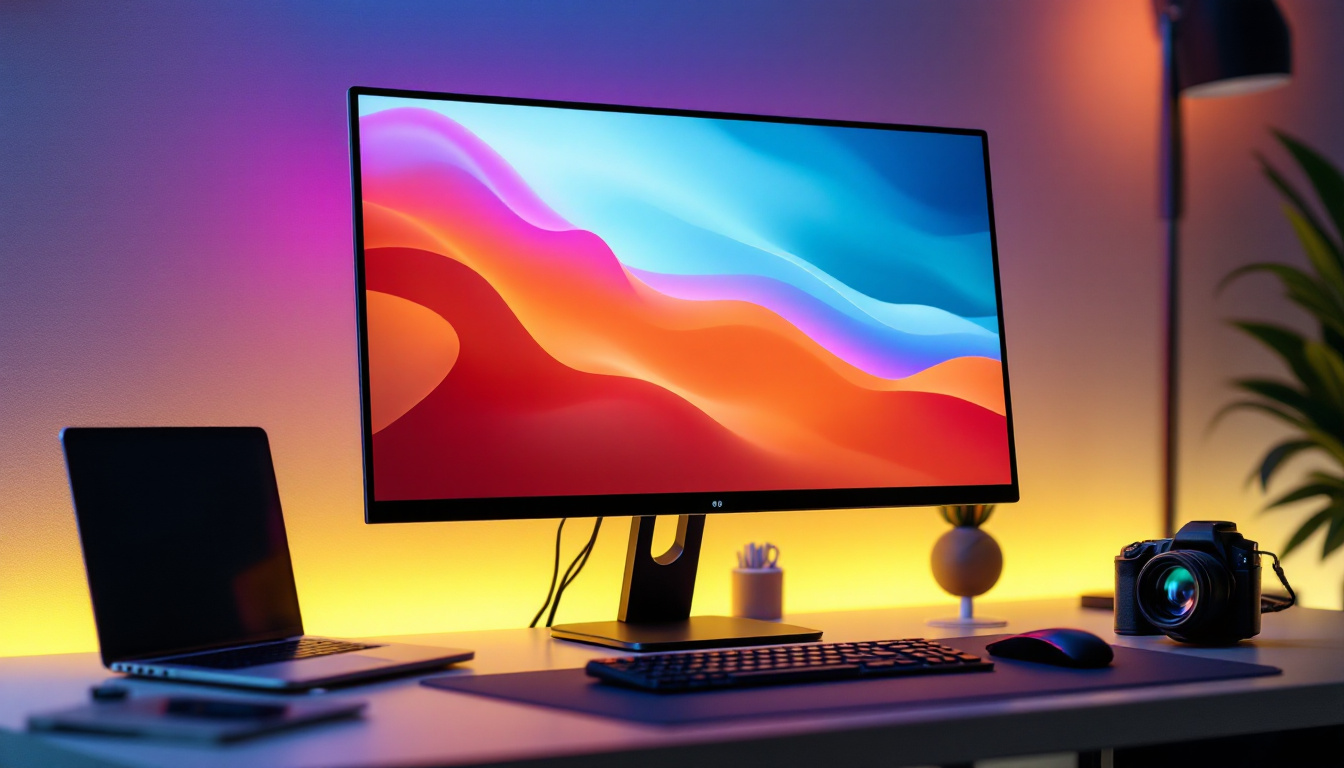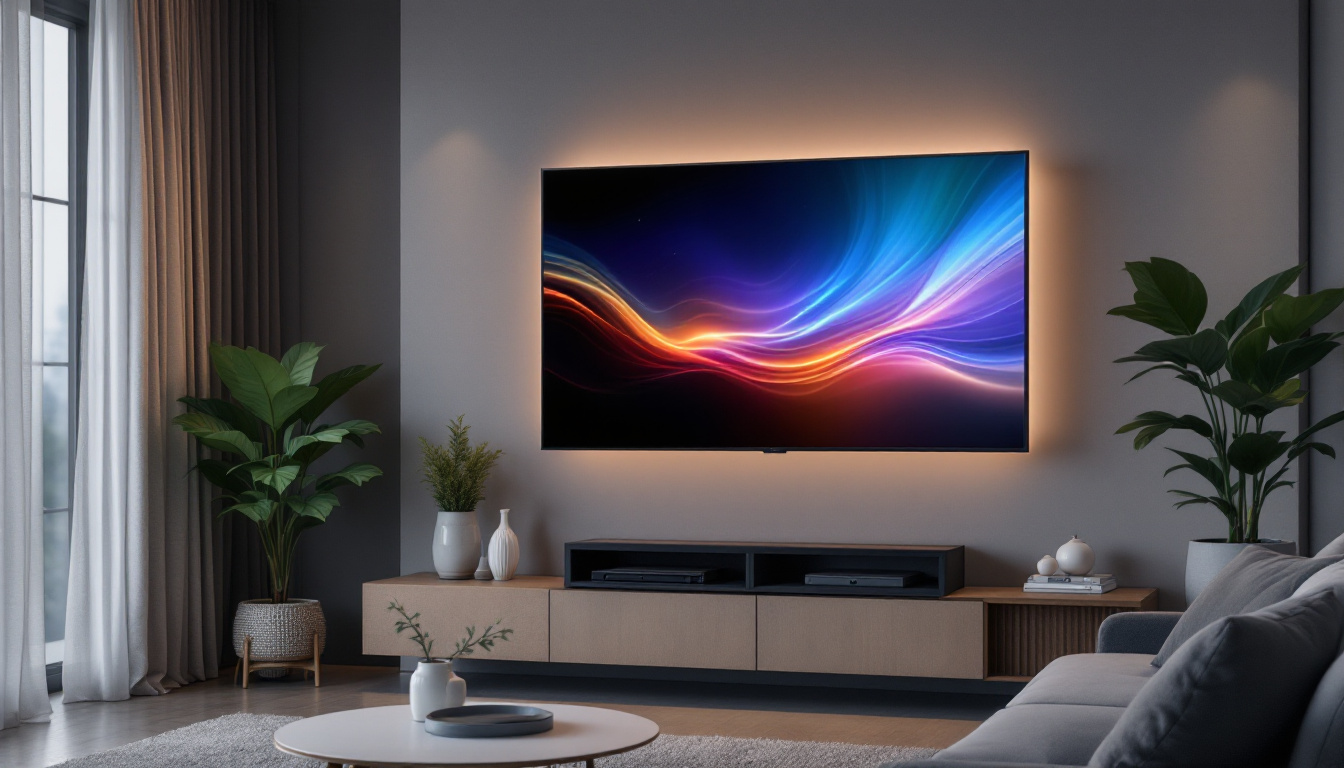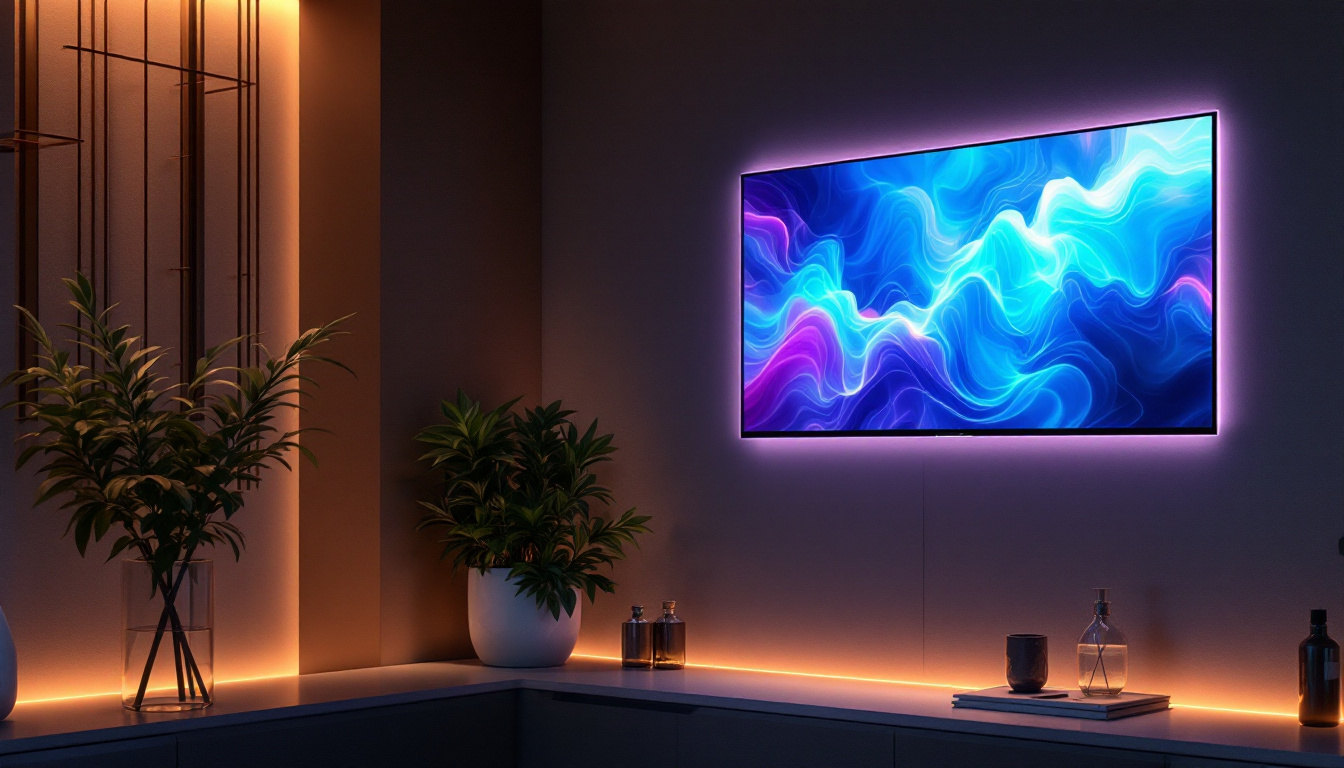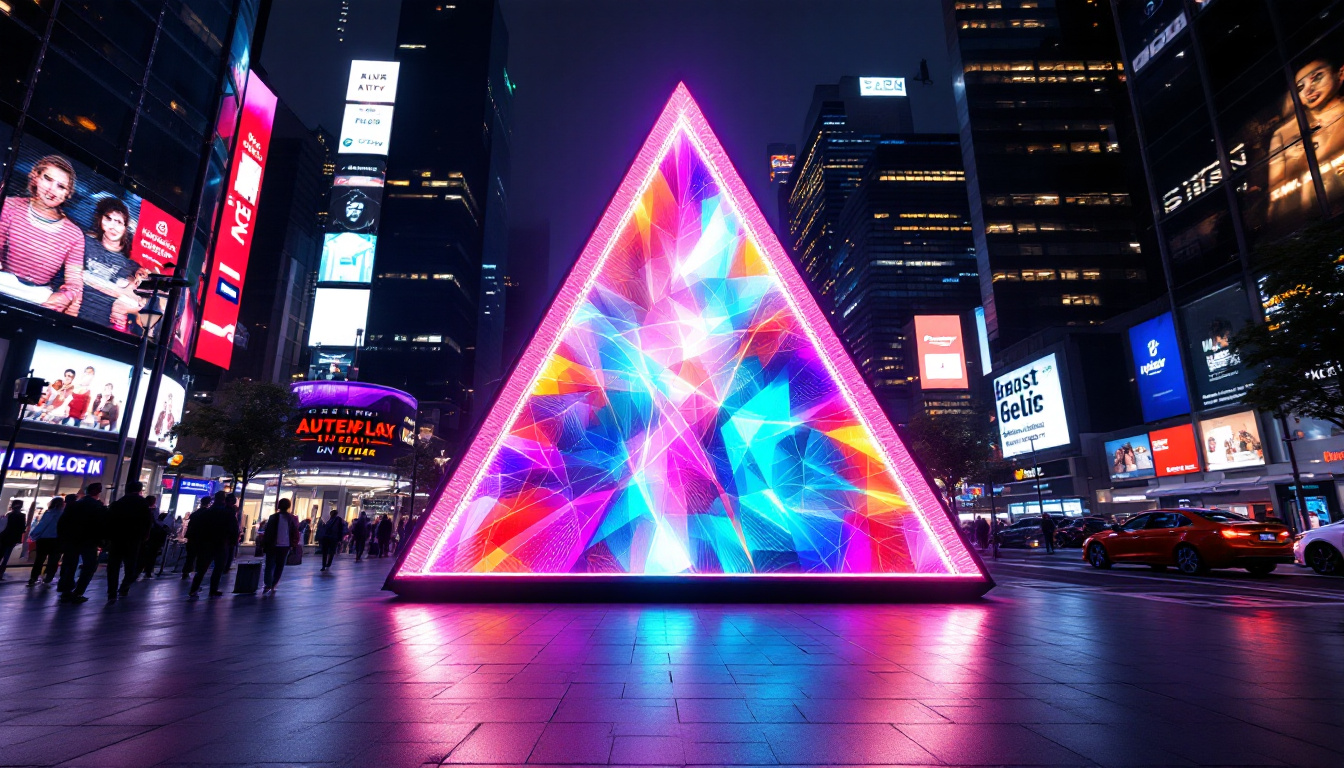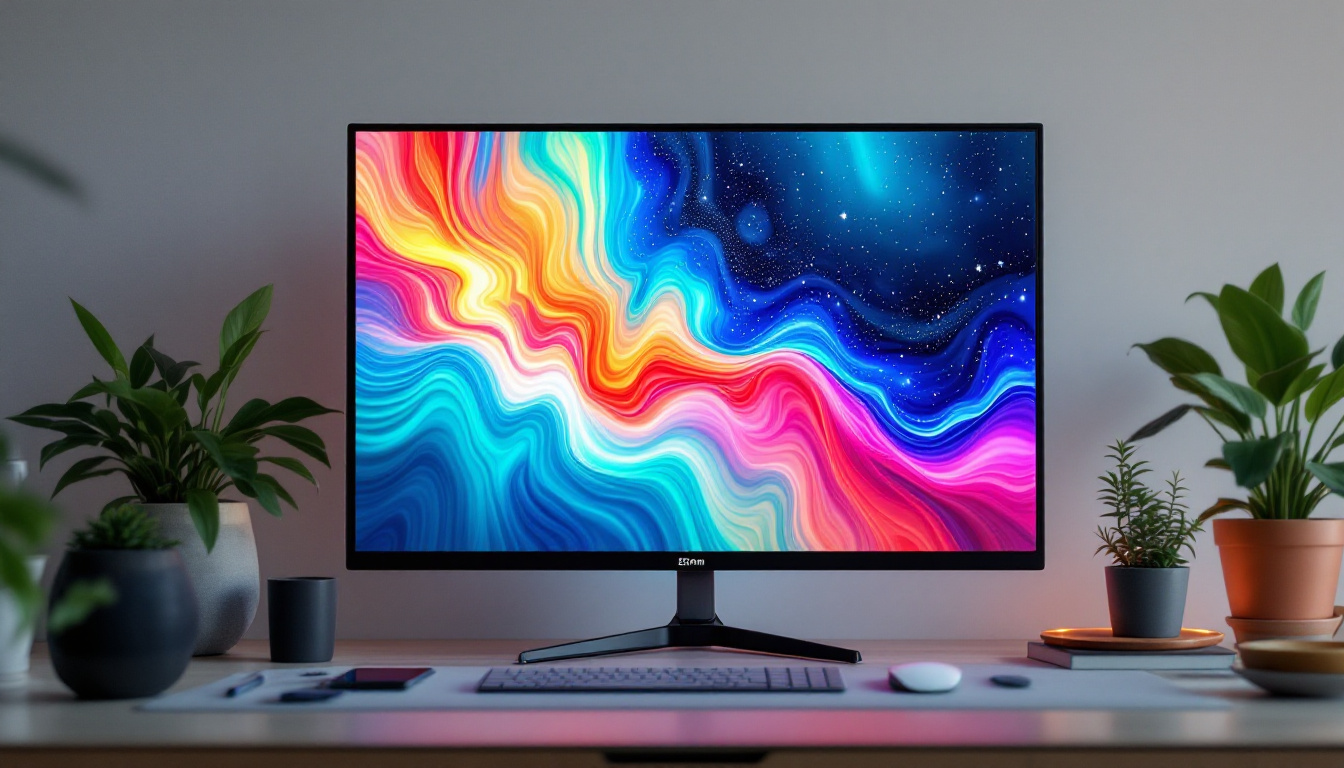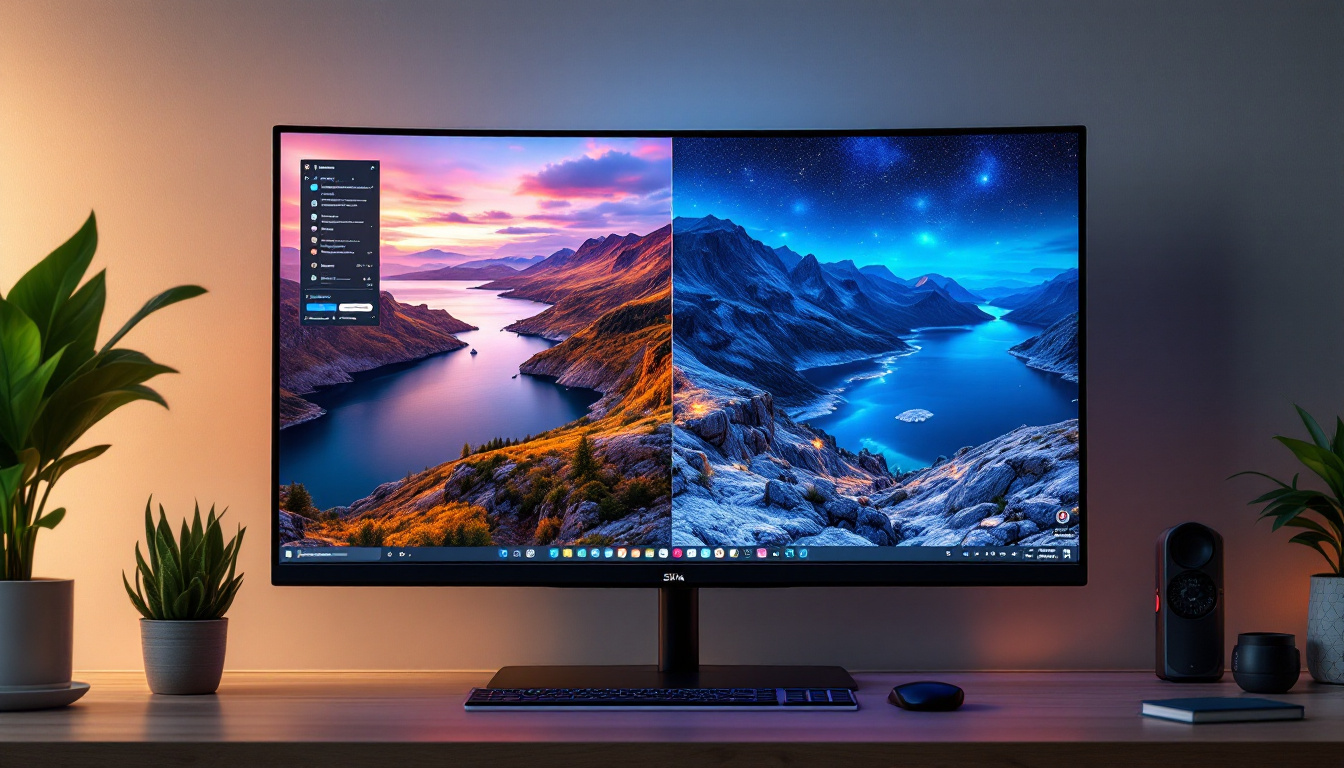In today’s fast-paced digital world, desktop monitors play a crucial role in enhancing productivity, entertainment, and overall user experience. Among the various types of displays available, LED (Light Emitting Diode) monitors have gained immense popularity due to their superior performance and energy efficiency. This article delves into the intricacies of LED displays, exploring their benefits, features, and what to consider when purchasing a desktop monitor.
Understanding LED Technology
LED technology has revolutionized the way we perceive visual content on screens. Unlike traditional LCD monitors that use fluorescent backlighting, LED monitors utilize tiny diodes to emit light, resulting in brighter images and better color accuracy. This section will explore the fundamental aspects of LED technology and its advantages over other display types.
How LED Displays Work
At the core of LED displays is a matrix of tiny light-emitting diodes. These diodes can be grouped into different configurations, such as edge-lit or backlit, to create images. Edge-lit LED displays have LEDs positioned along the edges of the screen, while backlit displays feature a grid of LEDs behind the screen. This technology allows for precise control over brightness and color, leading to vibrant visuals.
Moreover, LED displays can achieve higher contrast ratios, which means darker blacks and brighter whites. This capability is especially beneficial for tasks that require meticulous color accuracy, such as graphic design or photo editing. Additionally, the rapid response time of LED technology minimizes motion blur, making these monitors ideal for gaming and fast-paced video content. The ability to display a wider color gamut further enhances the viewing experience, allowing for more realistic and immersive images that draw viewers into the content.
Benefits of LED Monitors
LED monitors offer several advantages that make them a preferred choice for both casual users and professionals. One of the most significant benefits is energy efficiency. LED technology consumes less power compared to traditional displays, reducing electricity bills and environmental impact.
Another advantage is the slim profile of LED monitors, which allows for sleek designs that save desk space. Furthermore, LED monitors often come with a longer lifespan, meaning users can enjoy their investment for years without worrying about frequent replacements. The durability of LED technology is also noteworthy; these displays are less prone to damage from impacts and can withstand varying environmental conditions, making them suitable for both home and commercial use. Additionally, many LED monitors now come equipped with advanced features such as adaptive brightness control, which adjusts the screen’s brightness based on ambient light, further enhancing user comfort and reducing eye strain during prolonged use.
Different Types of LED Displays
While the term “LED monitor” is often used interchangeably with “LCD monitor,” there are various types of LED displays that cater to different needs. Understanding these types can help buyers make informed decisions based on their specific requirements.
Edge-Lit vs. Full-Array LED
Edge-lit LED monitors are typically thinner and lighter, making them an attractive option for those who prioritize aesthetics and space-saving designs. However, they may not provide the same level of uniform brightness across the screen as full-array LED monitors. Full-array monitors, on the other hand, feature a grid of LEDs behind the screen, allowing for better local dimming and improved contrast ratios.
For users who engage in color-critical work, full-array LED monitors are often the better choice due to their superior performance in color accuracy and brightness consistency. However, edge-lit monitors can still deliver excellent visuals for general use, gaming, and casual viewing. Additionally, edge-lit displays often come with a lower price tag, making them accessible for budget-conscious consumers who still want a quality viewing experience. It’s important to consider the intended use; for instance, gamers may prefer the enhanced responsiveness of edge-lit displays, while graphic designers might lean towards full-array models for their precise color representation.
OLED vs. LED
Organic Light Emitting Diode (OLED) technology is another contender in the display market, often compared to LED. While OLED offers superior color reproduction and deeper blacks due to its ability to turn off individual pixels, LED monitors are generally more affordable and have a longer lifespan.
For users who prioritize budget and longevity, LED monitors remain a solid choice. However, for those seeking the best possible visual experience, particularly for high-end gaming or professional media creation, OLED may be worth the investment. The vibrant colors and stunning contrast ratios of OLED displays can elevate the viewing experience to a new level, making them ideal for movie enthusiasts and photographers who require precise color fidelity. Furthermore, as technology advances, the price gap between OLED and LED displays is gradually narrowing, making OLED a more viable option for a broader audience. As consumers become more aware of the differences, the choice between LED and OLED may increasingly hinge on personal preference and specific use cases.
Key Features to Consider When Buying an LED Monitor
When shopping for an LED monitor, several key features should be taken into account to ensure that the selected display meets the user’s needs. Understanding these features can help narrow down the options and lead to a more satisfying purchase.
Resolution
Resolution is one of the most crucial factors to consider when choosing a monitor. It refers to the number of pixels displayed on the screen and directly impacts image clarity. Common resolutions include Full HD (1920×1080), Quad HD (2560×1440), and 4K Ultra HD (3840×2160).
For general use, a Full HD resolution is often sufficient. However, for tasks that require high detail, such as video editing or gaming, a higher resolution like 4K can provide a more immersive experience. Users should assess their needs and choose a resolution that aligns with their intended use of the monitor.
Refresh Rate
The refresh rate, measured in hertz (Hz), indicates how many times the monitor refreshes the image per second. A higher refresh rate results in smoother motion, making it particularly important for gaming and fast-paced video content. Standard monitors typically have a refresh rate of 60Hz, while gaming monitors often boast rates of 120Hz, 144Hz, or even higher.
For gamers, a higher refresh rate can significantly enhance the gaming experience, providing smoother gameplay and reducing motion blur. Casual users may find that a standard refresh rate suffices for everyday tasks like browsing and streaming.
Connectivity Options
Connectivity is another essential feature to consider. Modern monitors come equipped with various ports, including HDMI, DisplayPort, USB-C, and VGA. The availability of these ports can determine compatibility with different devices, such as laptops, gaming consoles, and desktop computers.
For users who plan to connect multiple devices, having a monitor with multiple input options is beneficial. Additionally, USB-C ports can offer added functionality, allowing for data transfer and charging through a single cable, which is particularly useful for laptop users.
Ergonomics and Design
In addition to performance features, the ergonomics and design of a monitor can significantly impact the user experience. A well-designed monitor can enhance comfort and productivity, especially for those who spend long hours in front of the screen.
Adjustability
Look for monitors with adjustable stands that allow for height, tilt, and swivel adjustments. This flexibility enables users to position the monitor at an optimal viewing angle, reducing strain on the neck and eyes. Some monitors even offer VESA mount compatibility, allowing for wall mounting or the use of third-party stands.
Screen Coating
The screen coating can also affect the viewing experience. Glossy screens tend to produce more vibrant colors and deeper blacks but can be prone to glare in brightly lit environments. Matte screens, on the other hand, reduce reflections and are often preferred in office settings.
Popular Brands and Models
As the market for LED monitors continues to grow, several brands have established themselves as leaders in the industry. Each brand offers a range of models, catering to different needs and budgets. Here are a few notable brands and their popular models.
Dell
Dell is renowned for its high-quality monitors that cater to both professional and casual users. The Dell UltraSharp series is particularly popular among graphic designers and photographers due to its exceptional color accuracy and wide viewing angles.
For gamers, the Dell Alienware series offers high refresh rates and fast response times, making them ideal for competitive gaming. Dell’s commitment to quality and performance has made it a trusted choice for many users.
ASUS
ASUS is another prominent brand known for its innovative designs and cutting-edge technology. The ASUS ROG (Republic of Gamers) series features monitors with high refresh rates and adaptive sync technology, providing an immersive gaming experience.
Additionally, ASUS offers a range of professional monitors with features tailored for content creators, such as high color accuracy and extensive connectivity options. Their diverse lineup ensures that there is an ASUS monitor for every type of user.
LG
LG has made a name for itself with its OLED technology and UltraWide monitors. The LG UltraFine series is particularly popular among Mac users, offering seamless compatibility and exceptional color reproduction.
For those seeking a more immersive experience, LG’s UltraWide monitors provide expansive screen real estate, making them ideal for multitasking and gaming. LG’s commitment to innovation and quality ensures that users can find a monitor that meets their specific needs.
Conclusion
Choosing the right desktop monitor can significantly enhance the overall computing experience. LED displays, with their superior performance and energy efficiency, have become a popular choice for a wide range of users. By understanding the various types of LED monitors, key features to consider, and the leading brands in the market, individuals can make informed decisions that align with their specific needs.
Whether for professional work, gaming, or casual use, the right monitor can transform how users interact with their digital world. As technology continues to evolve, staying informed about the latest developments in monitor technology will ensure that users can enjoy the best possible experience on their desktops.
Discover LumenMatrix’s Advanced LED Display Solutions
Ready to elevate your visual experience with the latest in LED technology? Look no further than LumenMatrix, a pioneer in crafting immersive LED displays that bring your content to life. From dynamic Indoor LED Walls to captivating Outdoor displays and beyond, LumenMatrix offers a comprehensive range of solutions tailored to your unique needs. Embrace the future of visual communication and check out LumenMatrix LED Display Solutions today to transform your space with unparalleled clarity and impact.

